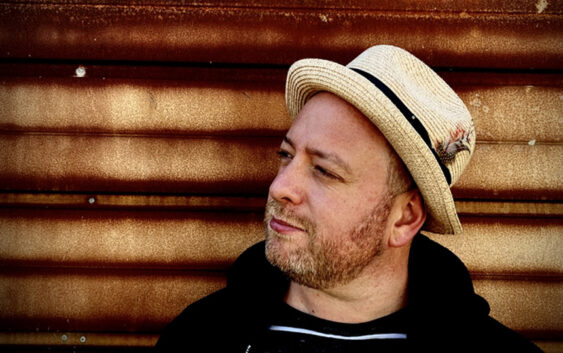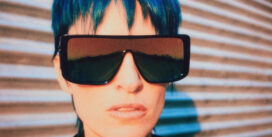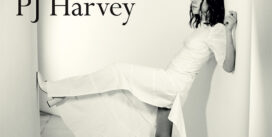Stream the album on Soundcloud
In this interview, Ink Project frontman/founder Jez Lloyd talks about the new album, Ink Project’s history, the Blind Colour record label, and genre-bending.
So, you guys are new to me and Rhythm Spirit definitely piqued my interest as a musician who loves the energy of combining different genres to form one’s sound. I definitely hear a lot of different musical influences in this project, i.e. drum n’ bass, jungle, some Afrobeat for sure as well as some jazz. But I also hear a little bit of a throwback to the ambient electronica of the 90s and early 00s that was coming out of the UK. Am I imagining that or on the right track at all? Who are some of your favorite artists and influences?
Pretty much. I love all those styles, plus a whole lot more and try and incorporate my favourite elements under the Ink Project banner.
Some people think it’s trip hop, others electronic soul, goth or dark-wave, others breaks and others modern world or global music, even electronic jazz in places…it’s always interesting to hear people’s thoughts and opinions on the music. I like to think of it as a celebration of eclecticism and collaboration which is what I’m all about, although others might see it as a massive exercise in self-indulgence, which I guess it is, as is most underground music and art in general a lot of the time. It’s never been about making tonnes of money from this project, more about trying to make good art via a fusion of styles and something creatively challenging yet satisfying, with some live performances to experience the songs in a different context after they’ve been released.
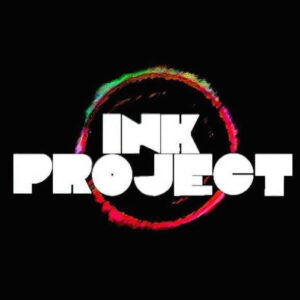 Growing up in London, I was fortunate enough to have lived through many of the amazing music scenes thriving there in the 90’s. It all massively influenced the way I approach and make music. At the time, I just soaked it all up like a sponge and kept an open mind to most genres, although I had no idea how lucky we were to be living through such a golden period of music and culture in the city. We were spilt rotten to have access to all of that on our doorstep.
Growing up in London, I was fortunate enough to have lived through many of the amazing music scenes thriving there in the 90’s. It all massively influenced the way I approach and make music. At the time, I just soaked it all up like a sponge and kept an open mind to most genres, although I had no idea how lucky we were to be living through such a golden period of music and culture in the city. We were spilt rotten to have access to all of that on our doorstep.
When I was a teenager at a very multi-cultural school in South London, I actually learnt to play jazz flute (no Anchorman jokes please!) before discovering metal and soon ditching jazz to learn the guitar. I played in a few metal bands with some schoolmates and we’d go on the train up to Central London to stage dive at various mid-week thrash and death metal nights at the old Marquee and Astoria on the Charing Cross Road, turning up at school the next morning with all kinds of aches and pains, not really paying attention in class as a result and getting told to get our bloody haircuts or we’d be suspended haha.
A few years later we would return to those same venues plus others around Camden for more goth, grunge, post-punk and rock/metal club nights, mainly to drink cheap Newcastle Brown Ale and soak up the newest sounds the DJs were playing before getting a cheap night bus home and watching MTV Headbangers Ball on repeat the next day. I got really into bands like Metallica, Sepultura, Pantera, Slayer, Anthrax, Nine Inch Nails, The Cure, Cocteau Twins, hardcore like Helmet and Sick Of It All and more industrial music like Ministry which was played at the clubs and great music to dance/rock out to.
I also loved all the artwork from those bands and owned loads of t-shirts – one of them by Cradle Of Filth had ‘Jesus Is A Cunt’ written on the back which led to a few funny looks when I was walking down the street haha. I was a hardcore metaller/goth for probably 5 years and loved every minute of it as it was a really friendly and inclusive scene with so many great gigs taking place most weekends and clubnight’s afterwards. We had our own extended family of misfits at the time and would all basically put on shows around London and support each other. It was a real DIY spirit that’s always stuck with me.
Eventually, after going through a heavy doom metal phase and listening to more melancholic bands like My Dying Bride, Anathema and Cathdral, I soon discovered more folky, world music like Dead Can Dance, old prog rock like Yes and Wishbone Ash which then led me to discover Brian Eno and ambient music before psychedelic trance and more experimental electronica like the Future Sound Of London, Orbital, Aphex Twin and Squarepusher. I then started listening to jazzy drum and bass, dub/reggae/funk, trip hop, tech house, Detroit and Swedish techno, dubstep and discovering Depeche Mode’s back catalogue which completely blew my mind….so went down a different path musically after that and became fascinated by groove, musical texture, fusion and how certain types of music make you feel.
Production-wise, after my metal phase, I decided that I wanted to stop playing guitar and instead, set up a home studio to make electronic music. I liked the appeal of sampling, and synthesis opened up a whole new world of possibilities where I could fuse all sorts of production styles together. It was such an exciting, new prospect compared to moshing on stage with my Ibanez guitar, but obviously came with many technical challenges that took a long time to work through.
I bought a pc with Cubase and some plugins, a Yamaha sampler and Mackie mixer, sampled loads of records from my collection and made some pretty amateur trip-hop, house, techno and drum and bass as I learnt to produce, before eventually getting better and deciding to work with my old singer Mel Dymond, forming Ink Project in 2009…making what was then called ‘trip hop’ and breaks…basically soulful dance music with vocals that we could perform like I used to with my old metal band but in a totally different way to dance music heads.
That was back in 2011 and since then, I’ve just kept developing the Ink Project sound or formula. We’ve released two albums and a series of EP’s with various collaborators, set up a record label called Blind Colour releasing similar music from other, like-minded artists, made music for film and tv, done some sound design and plenty of remixes, played live and DJyed all around the world, whilst staying relatively underground and unknown, bubbling beneath the surface and keeping it all DIY and on our own terms.
Our new album is a natural progression from our first two albums and fuses a bit of trip hop, soul, dark ambient, jazz, dub, goth and global/world music…so something for everyone. It’s been the most enjoyable record I’ve ever made and I’ve been so fortunate to have collaborated with some amazing people on it.
My influences come from all over the place but when it comes to Ink Project specifically, the main ones have probably been Cocteau Twins, Nina Simone, Nine Inch Nails, Future Sound Of London, early Mo Wax Records, Dead Can Dance, Tears For Fears, Depeche Mode, Dreadzone, Lamb, Salmonella Dub, Underground Resistance, King Tubby and Bonobo.
Where did some of the samples come from, like on Rhythm Spirit Part 2? Do you ever do any field recording for Ink Project songs?
Over the last 5 years or so, I’ve been working a lot in the sound design area of audio for film, tv and video games and learning more about sound in general, so it felt natural to fuse some of these approaches into my production work for Ink Project – combining my usual process of sampling from all kinds of sources, with designing and incorporating various real world sounds I’ve collected as well.
The samples on Rhythm Spirit Part 2 actually come from a jungle snippet I recorded when on the coast of Vietnam, some sea samples from the South Coast of the UK where I live with my family, a TED talk about rhythm, an old choral vinyl album I found in a cheap charity shop in Margate plus loads more textures and atmospheres I’ve weaved in from various places and re-contextualized.
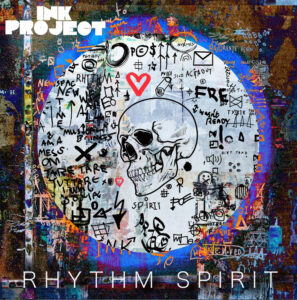 During the creation of the album my son was born so as a result, despite the sleepless nights looking after him and somehow managing to produce music, I spent a lot of time with my family relaxing in the South Downes countryside and at the beach in Brighton and Cornwall, as well as travelling around the world a lot with my job in audio, so I was witnessing and thinking a lot about the power of the natural elements – earth, wind, water and fire and decided to record and feature a lot of those core sounds which you hear scattered throughout the album.
During the creation of the album my son was born so as a result, despite the sleepless nights looking after him and somehow managing to produce music, I spent a lot of time with my family relaxing in the South Downes countryside and at the beach in Brighton and Cornwall, as well as travelling around the world a lot with my job in audio, so I was witnessing and thinking a lot about the power of the natural elements – earth, wind, water and fire and decided to record and feature a lot of those core sounds which you hear scattered throughout the album.
What was your workflow like for making this album…what sort of instruments/gear do you use? How hands-on are the other musicians when they collaborate? Is it mostly you?
I’m very collaborative and love working with other artists, creatives and singers in general. It always keeps things fresh and you constantly learn new ways of working, plus develop new friendships and perspectives as a result. My production processes vary but I usually sketch out some backing tracks consisting of drums and bass first, sending them as loops to the singers to then write their vocals and lyrics over, then there’s a lot of back and forth about the structure before I start adding in other parts like keys, sound fx and mixing.
I currently use Ableton Live on a MacBook Pro with a UAD Apollo Soundcard running all of the UAD plugins, plus loads of other plugins from Softube, Soundtoys, Slate, Synchro Arts, Krotos, a tonne of Roland Cloud and Arturia synths, all going through a set of Genelecs and Eve SC 205 Monitors which I switch between.
On this album, I also used a Softube Console 1 to mix through an SSL 4000 E-Series Console emulation. Hardware-wise, I’ve also got a few random guitar delay pedals and I like to drum in and perform a lot of the parts live on an Arturia Keystep, Roland SPD-SX and Akai APC-40 to give the grooves a human feel. I also have an old Rhodes-style piano which I play a lot of the parts on, an old Bose Dr Rhythm DR-55 drum machine, a dub siren, Stylophone and a Nord Lead 2 synth that I borrowed from a friend.
However, as I said before, the vast majority of my work always involves sampling from records and spending a long time processing and mangling the samples into something new, presenting them in a new context.
It’s just one big audio jigsaw puzzle to me. 🙂
So yeah, I’ve got a pretty minimal set-up but I’m a big believer in the power of musical ideas and fusions over anything else and would rather spend a lot of time thinking about the type of music to make and listening to loads of new and old music to help with that, then collect, choose and process the right sounds, fuse them together and create certain atmospheres as opposed to focusing on being a virtuoso instrumentalist…I’m definitely more of a producer and vibe merchant coming at production from a musicologist, sampling and DJ perspective as opposed to being a strict musician, although I can play guitar, flute and drums a little.
How did the pandemic and lockdown change your production strategies for this album? I got the sense from another interview that you live far from each other so tend to work remotely anyway, is that correct?
Although obviously an awful time for the world in general, the timing of Covid was a blessing for me production-wise. I hadn’t quite finished the album yet but the deadline was looming so lockdown forced me to focus and finish it with everyone involved.
I’ve known FiFi Rong for over 10 years and Coreysan around 5 years I think. We’re all really good friends and like-minded souls who communicate regularly, have rehearsed and played live shows together and meet up when we can. Yazmyn Hendrix who sings on one track is also someone I know from the Brighton music scene and I went to college with Jamie Chipman who does all of our artwork and made one of the videos on the album. I was also introduced to our mastering engineer Aneek Thapar via Andrew Beaton AKA Black Square who is one of the local Brighton-based artists on my label Blind Colour. So it’s a wonderful group of people on this record and a loose collective, all giving it their own, unique stamp. I’ve been very lucky to meet and work with them all and am really grateful.
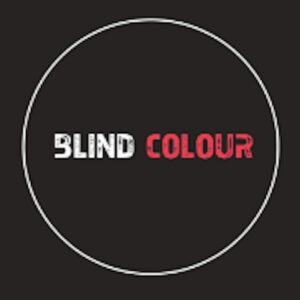 I already know the story behind the name of the band, but tell our readers in your own words because I think it’s a good one!
I already know the story behind the name of the band, but tell our readers in your own words because I think it’s a good one!
It’s pretty simple really. On a personal level, Ink Project represents my own musical journey as a kind of audio diary. Except, instead of using a pen like you would when writing a diary, I’m obviously using sound to join the dots between my favourite elements of different genres, underpinned by open-mindedness and the power of collaboration. The name can mean anything to anyone though and I’d personally love it if people interpreted in their own way when listening to the music.
I know you guys are pretty active as DJs, do you remix other artists as well?
We try to play live when we can. FiFi has toured with Tricky and Yello all over Europe in the past, as well as performing solo and touring China, Germany and the UK. Corey also plays bass with Calypso Rose around the world and with all sorts of other bands. I’m more of a studio bod and producer/sound designer/DJ/label/publishing guy living by the seaside but also love playing live with my assorted box of knobs, plus DJying and like to put together all sorts of mixes at home on my decks. In recent years I’ve had DJ residencies in Brighton and played around the UK and abroad in places like Shanghai, LA and New York.
I’ve also done a few remixes recently for the likes of Equador who are Zero 7’s side project, Tiny Leaves, Becca Stephens, including others that for whatever reason, didn’t get released. Remixing is definitely something I’d like to do more of actually as I love working with stems.
Ink Project have been planning some live shows and DJ sets and we were also due to play some festivals last summer but they’ve since been put on hold due to the Covid panedemic…frustrating but you’ll just have to watch this space for now, sign up to our social media channels and check out our new record on the meantime! 🙂


